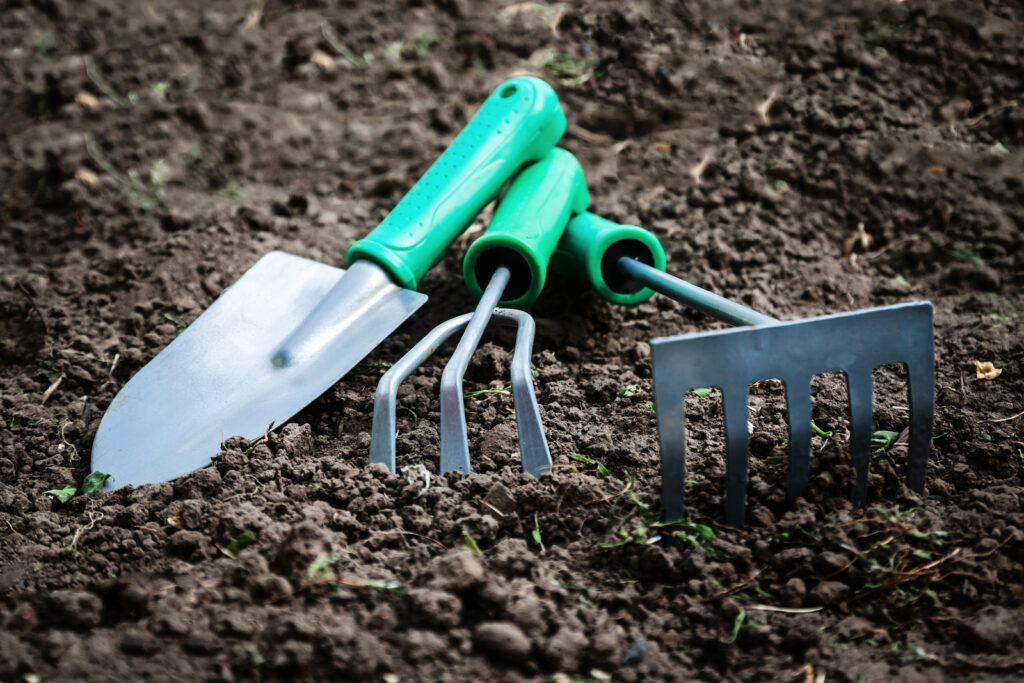
Winter can be a challenging time for landscaping, especially in Lubbock, where cold temperatures and dry conditions can take a toll on gardens. For busy residents, maintaining a lush landscape during this season can feel overwhelming. Fortunately, there are plenty of low-maintenance landscaping ideas that not only enhance the beauty of your outdoor space but also require minimal effort.
In this article, we’ll explore practical options that are ideal for Lubbock’s winter climate, allowing you to enjoy a vibrant landscape without the extensive upkeep. Whether you’re looking to add some color to your garden or create a peaceful outdoor retreat, these ideas will help you achieve a stunning winter landscape while saving time and effort.
Understanding Lubbock’s Climate
Before diving into specific landscaping ideas, it’s essential to understand the climate conditions in Lubbock. With average winter temperatures ranging from the mid-30s to the low 50s Fahrenheit, and the occasional frost, it’s crucial to choose plants and materials that can withstand these conditions. Additionally, Lubbock experiences dry weather and limited rainfall, making drought-resistant and native plants ideal choices for winter landscaping.
Selecting the right plants not only ensures their survival through the winter months but also minimizes the need for watering and maintenance. Understanding these climate factors will help you create a beautiful landscape that thrives even in the colder months.
Low-Maintenance Plant Options
Drought-Resistant Plants
When considering low-maintenance landscaping, drought-resistant plants should be at the top of your list. These hardy varieties, such as succulents and agave, thrive in dry conditions and require minimal watering. By incorporating these plants into your winter landscape, you can enjoy vibrant greenery without the stress of constant upkeep.
For example, consider adding hens and chicks (Sempervivum) to your garden. These resilient succulents not only provide visual interest but also flourish in Lubbock’s climate. They can be planted in rock gardens or containers, offering versatility and a unique touch to your landscaping.
Common Questions:
– How often should I water drought-resistant plants in winter? Most drought-resistant plants only need watering every few weeks during the winter months, depending on rainfall.
– What are some good pairings for succulents? Consider combining different varieties of succulents in a container or garden bed for a visually appealing display.
Native Plants
Native plants are another excellent choice for low-maintenance landscaping in Lubbock. These plants are adapted to the local climate and soil conditions, making them easier to care for while supporting local wildlife. Examples of native plants include desert marigold (Baileya multiradiata) and blackfoot daisy (Melampodium leucanthum), both of which can add vibrant color to your landscape.
By planting native species, you not only reduce water usage but also promote biodiversity. Native plants often require less fertilizer and pest control, leading to a more sustainable and low-maintenance landscape.
Common Questions:
– How can I find native plants suitable for my garden? Local nurseries often carry a selection of native plants, or you can consult online resources like the Texas Native Plant Database.
– Do native plants attract pests? Native plants are often more resistant to local pests, and many attract beneficial insects that help with pollination.
Perennials
Perennials are an excellent investment for any landscape, as they return year after year with minimal maintenance. Hardy varieties like salvia, coreopsis, and daylilies can provide color and texture to your winter garden while requiring little care once established.
Incorporating perennials into your landscape allows you to enjoy a beautiful garden without the need for constant replanting each season. They can thrive in a variety of settings, from garden beds to containers, making them a versatile option for your winter landscape.
Common Questions:
– What are the best perennials for winter in Lubbock? Consider varieties like Mexican feather grass and purple coneflower, which can withstand the winter months and bloom beautifully in spring.
– How do I prepare perennials for winter? A light layer of mulch can help insulate the roots and protect them from extreme temperatures.
Hardscape Features
Rock Gardens
Creating a rock garden is an excellent way to incorporate low-maintenance landscaping into your winter design. Rock gardens not only enhance the aesthetic appeal of your yard but also require minimal watering and care compared to traditional gardens. By using a combination of rocks, gravel, and drought-tolerant plants, you can create a stunning landscape feature that withstands Lubbock’s dry winters.
When designing a rock garden, consider using larger rocks as focal points and filling in the spaces with smaller stones and gravel. This approach allows for efficient drainage while providing a visually appealing texture to your landscape. Adding a few succulents or hardy native plants can bring life to the arrangement without demanding much maintenance.
Common Questions:
– How do I maintain a rock garden during the winter? Regularly check for debris and remove any weeds that may emerge. Watering should be minimal, especially if rain is forecasted.
– What types of rocks are best for a rock garden? Natural stones like flagstone, river rocks, and granite are excellent choices due to their durability and natural appearance.
Pathways and Patios
Incorporating pathways and patios into your landscaping can significantly reduce maintenance while enhancing the functionality of your outdoor space. Using materials such as stone, pavers, or gravel, you can create durable surfaces that require little upkeep. These hardscape features not only provide a clear route through your garden but also define your landscape, making it more visually appealing.
Consider designing a winding pathway that leads through your garden or creating a cozy patio area for relaxation and entertaining. When selecting materials, opt for permeable options that allow water to drain effectively, reducing the risk of erosion and minimizing the need for maintenance.
Common Questions:
– What materials are best for low-maintenance pathways? Permeable pavers, decomposed granite, or gravel are great choices that allow for easy drainage and require minimal upkeep.
– How can I keep my patio looking clean in winter? Regularly sweeping leaves and debris will help maintain the appearance of your patio. A simple power wash in the spring can remove any stubborn stains or dirt.
Mulching
Applying mulch in your garden is a simple yet effective way to enhance your landscaping while reducing maintenance needs. A layer of mulch helps regulate soil temperature, retain moisture, and suppress weeds, making it a valuable addition to any winter landscape.
When selecting mulch, consider organic options like bark chips, wood chips, or straw, which can also enrich the soil as they break down. For a more decorative touch, colored mulch can provide a beautiful contrast against your plants and flowers.
Common Questions:
– How thick should my mulch layer be? A layer of 2 to 4 inches is ideal for effective weed suppression and moisture retention.
– Can I use landscape fabric under my mulch? Yes, landscape fabric can help prevent weed growth while allowing water and nutrients to reach the soil.
Seasonal Decor Ideas
Holiday Lighting
As winter approaches, adding holiday lighting can transform your landscape into a festive wonderland with minimal effort. Simple string lights or solar-powered fixtures can illuminate your garden pathways and highlight your landscaping features. Choose warm white or colored lights to create a welcoming ambiance that enhances the beauty of your outdoor space.
When installing holiday lighting, focus on key features like trees, shrubs, and architectural elements of your home. This approach not only enhances the visual appeal but also requires little maintenance once set up.
Common Questions:
– What are some easy ways to hang holiday lights? Use clip-on hooks designed for outdoor use or zip ties for secure attachment without damaging your plants.
– How can I minimize energy costs with holiday lighting? Opt for LED lights, which consume less energy and last longer than traditional bulbs.
Winter Containers
Winter container gardens are a fantastic way to add color and interest to your outdoor space during the colder months. By selecting evergreen plants, ornamental grasses, or seasonal decorations, you can create low-maintenance displays that thrive in Lubbock’s winter climate.
Consider using larger containers that can withstand winter conditions and fill them with hardy plants like winterberry or pansies. Incorporating decorative elements such as pine cones, berries, or even small holiday ornaments can add a festive touch without requiring much upkeep.
Common Questions:
– What types of plants work best in winter containers? Opt for cold-tolerant options like evergreen shrubs, kale, or ornamental cabbage that can withstand colder temperatures.
– How often should I water winter containers? Watering needs vary, but it’s essential to check the soil moisture regularly, especially if temperatures rise during the day.
Tips for Maintenance
Winter Care Basics
Maintaining your landscape in winter involves understanding the specific needs of your plants. While many low-maintenance varieties require little attention, regular monitoring is essential. Ensure your plants receive adequate water, especially during dry spells, as they can still become dehydrated. Protect sensitive plants from frost by using frost blankets or burlap, and mulch around larger plants to insulate their roots.
Common Questions:
– How often should I water my winter plants? Typically, every two to four weeks is sufficient, but check the soil moisture regularly.
– What if my plants are exposed to frost? Cover them with frost cloths on particularly cold nights to help retain warmth.
Regular Assessment
Regularly check your landscape for pests and diseases, as they can still pose a threat in winter. Look for signs of discoloration or unusual spots on leaves. Winter is also a good time to evaluate what worked well in your landscape last year. Take notes on thriving plants and areas that need improvement to prepare for spring planting.
Common Questions:
– What pests should I watch for in winter? Keep an eye out for aphids, spider mites, and scale insects. Early detection is key.
– How can I prepare for spring? Reflect on your winter assessments to plan for planting and enhancements as spring approaches.
Ready to enhance your landscape this winter? Mission Service Companies can help! Our team of experts offers tailored solutions for low-maintenance landscaping and holiday lighting installation. Contact us today to schedule a consultation and create a stunning outdoor space!
